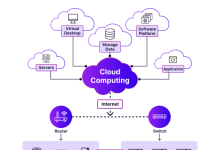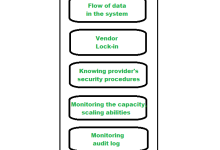disaster recovery in cloud computing
Ads
Introduction
Disasters can strike at any moment, jeopardizing the data and operations of businesses around the world. In today’s digital age, the reliance on technology is more significant than ever, and the consequences of data loss can be catastrophic. As such, implementing a robust disaster recovery plan is crucial to ensure the continuity of business operations.
Cloud computing has revolutionized the way businesses manage and store data, offering scalability, flexibility, and cost-efficiency. With the utilization of cloud-based services, companies can enhance their disaster recovery strategies and mitigate potential risks.
This article will delve into the strengths and weaknesses of disaster recovery in cloud computing, providing insights into its effectiveness and challenges.
Strengths of Disaster Recovery in Cloud Computing
1. Scalability: Cloud computing allows businesses to easily scale their disaster recovery solutions based on their needs. Companies can quickly adjust their storage capacity and resources to meet the demands of a disaster situation.
2. Cost-Efficiency: By leveraging cloud-based disaster recovery solutions, businesses can reduce infrastructure costs associated with traditional methods. The pay-as-you-go model in cloud computing enables organizations to pay only for the resources they use, leading to significant cost savings.
3. Flexibility: Cloud-based disaster recovery provides businesses with the flexibility to customize their solutions according to their specific requirements. Companies can choose from a variety of disaster recovery options, such as backup and replication, to tailor their strategies to their needs.
4. Automation: Cloud computing offers automated disaster recovery processes that minimize human intervention and ensure swift recovery in the event of a disaster. Automated failover mechanisms enable businesses to quickly switch to backup systems without disruption.
5. Geographic Redundancy: Cloud providers offer data centers in multiple geographic locations, ensuring redundancy and data availability in the event of a regional disaster. This geographic diversity enhances the resilience of disaster recovery solutions.
6. Rapid Recovery: Cloud-based disaster recovery solutions enable businesses to recover their data and applications quickly after a disaster, minimizing downtime and ensuring business continuity. The high availability of cloud services facilitates rapid recovery processes.
7. Enhanced Security: Cloud providers implement robust security measures to safeguard data and protect against threats. By entrusting their disaster recovery to reputable cloud vendors, businesses can enhance the security of their critical information.
Weaknesses of Disaster Recovery in Cloud Computing
1. Dependency on Internet Connectivity: Cloud-based disaster recovery solutions rely on internet connectivity to function effectively. In the event of network outages or disruptions, businesses may face challenges accessing their data and applications stored in the cloud.
2. Data Security Concerns: While cloud providers implement stringent security measures, businesses may have concerns about the security of their data stored in the cloud. Data breaches and cyberattacks remain potential risks that companies need to address when entrusting their disaster recovery to cloud services.
3. Compliance and Regulatory Challenges: Businesses operating in regulated industries must ensure compliance with data protection regulations when utilizing cloud-based disaster recovery solutions. Meeting regulatory requirements and maintaining data privacy can be complex in the cloud environment.
4. Vendor Lock-In: Companies may face vendor lock-in issues when relying on a single cloud provider for disaster recovery services. Switching providers or transitioning to on-premises solutions can be challenging, leading to limitations in flexibility and scalability.
5. Limited Control Over Infrastructure: Cloud-based disaster recovery solutions involve the outsourcing of infrastructure and resources to third-party providers. Businesses may have limited control over their disaster recovery environment, raising concerns about data ownership and management.
6. Performance Concerns: The performance of cloud-based disaster recovery solutions can be affected by network latency, bandwidth limitations, and resource contention. Ensuring optimal performance during disaster recovery scenarios requires thorough testing and optimization.
7. Data Accessibility and Portability: Businesses need to consider data accessibility and portability when implementing cloud-based disaster recovery solutions. Transferring data between cloud providers or integrating on-premises systems with the cloud can pose challenges in data availability and synchronization.
Table: Disaster Recovery in Cloud Computing Overview
| Category | Strengths | Weaknesses |
|---|---|---|
| Scalability | Allows easy scaling based on needs | Dependency on internet connectivity |
| Cost-Efficiency | Reduces infrastructure costs | Data security concerns |
| Flexibility | Customizable solutions | Compliance challenges |
| Automation | Minimizes human intervention | Vendor lock-in |
| Geographic Redundancy | Enhances data availability | Limited control over infrastructure |
| Rapid Recovery | Minimizes downtime | Performance concerns |
| Enhanced Security | Robust security measures | Data accessibility challenges |
Frequently Asked Questions (FAQs)
1. What is disaster recovery in cloud computing?
Disaster recovery in cloud computing refers to the process of storing and protecting data in the cloud to ensure business continuity in the event of a disaster.
2. How can businesses benefit from cloud-based disaster recovery?
Businesses can benefit from cloud-based disaster recovery by leveraging scalable, cost-efficient, and flexible solutions to enhance their data protection strategies.
3. What are the security considerations when implementing cloud-based disaster recovery?
Security considerations include data encryption, access controls, compliance with regulatory requirements, and proactive threat detection measures.
4. How does geographical redundancy play a role in cloud disaster recovery?
Geographical redundancy ensures data availability by storing copies of data in multiple data centers located in different geographic regions, reducing the risk of data loss in case of a regional disaster.
5. What are the challenges of data portability in cloud disaster recovery?
Challenges of data portability include transferring data between cloud providers, maintaining data consistency, and ensuring seamless integration between on-premises and cloud environments.
6. What factors should businesses consider when choosing a cloud disaster recovery provider?
Businesses should consider factors such as security measures, service level agreements, data retention policies, scalability options, and customer support when selecting a cloud disaster recovery provider.
7. How can businesses ensure the effectiveness of their cloud disaster recovery plan?
Businesses can ensure the effectiveness of their cloud disaster recovery plan by conducting regular testing, implementing automated failover processes, monitoring system performance, and continuously updating their recovery strategies.
Conclusion
Disaster recovery in cloud computing offers businesses a powerful tool to safeguard their data, ensure business continuity, and mitigate the risks of potential disasters. By leveraging the strengths of cloud-based solutions and addressing the weaknesses through careful planning and risk management, companies can enhance their resilience and readiness for any unforeseen events.
It is essential for businesses to invest in robust disaster recovery strategies and consider the benefits and challenges of cloud computing. Embracing innovation and best practices in disaster recovery can provide a competitive edge and instill confidence in stakeholders.
Take the necessary steps today to evaluate your disaster recovery capabilities, assess your business needs, and partner with reputable cloud providers to secure your data and operations. Remember, proactive planning and preparation are key to overcoming challenges and thriving in today’s dynamic business landscape.
Prepare for the unexpected, protect your valuable assets, and ensure the continuity of your business with a resilient disaster recovery plan in cloud computing.
Disclaimer
This article is for informational purposes only and does not constitute professional advice. It is recommended that businesses consult with disaster recovery experts and IT professionals to tailor disaster recovery strategies to their unique needs and circumstances.









